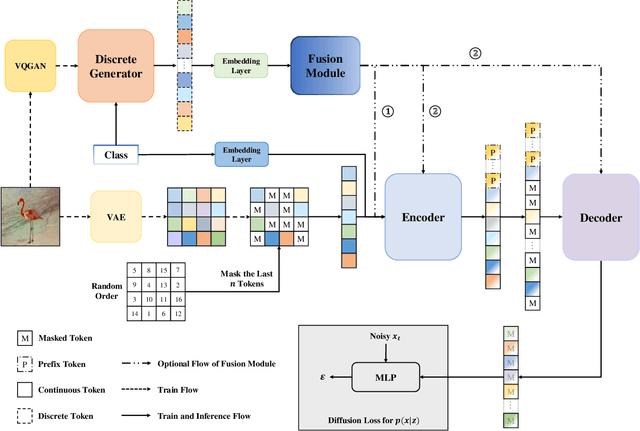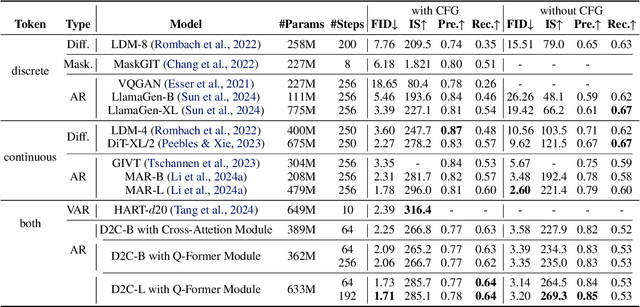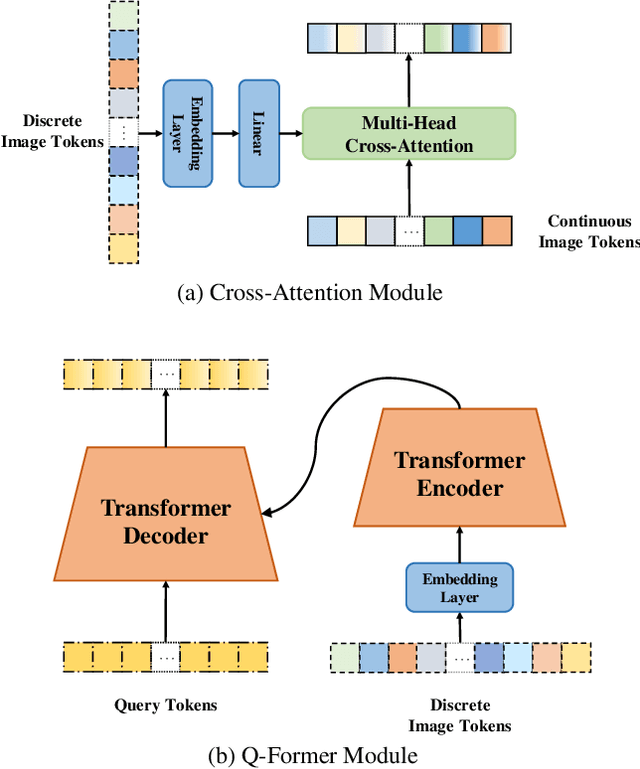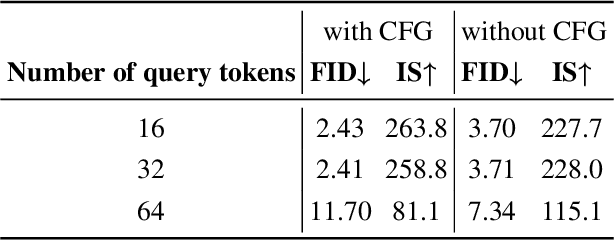Yufeng Chen
Think Natively: Unlocking Multilingual Reasoning with Consistency-Enhanced Reinforcement Learning
Oct 08, 2025Abstract:Large Reasoning Models (LRMs) have achieved remarkable performance on complex reasoning tasks by adopting the "think-then-answer" paradigm, which enhances both accuracy and interpretability. However, current LRMs exhibit two critical limitations when processing non-English languages: (1) They often struggle to maintain input-output language consistency; (2) They generally perform poorly with wrong reasoning paths and lower answer accuracy compared to English. These limitations significantly degrade the user experience for non-English speakers and hinder the global deployment of LRMs. To address these limitations, we propose M-Thinker, which is trained by the GRPO algorithm that involves a Language Consistency (LC) reward and a novel Cross-lingual Thinking Alignment (CTA) reward. Specifically, the LC reward defines a strict constraint on the language consistency between the input, thought, and answer. Besides, the CTA reward compares the model's non-English reasoning paths with its English reasoning path to transfer its own reasoning capability from English to non-English languages. Through an iterative RL procedure, our M-Thinker-1.5B/7B models not only achieve nearly 100% language consistency and superior performance on two multilingual benchmarks (MMATH and PolyMath), but also exhibit excellent generalization on out-of-domain languages.
Boosting Data Utilization for Multilingual Dense Retrieval
Sep 11, 2025Abstract:Multilingual dense retrieval aims to retrieve relevant documents across different languages based on a unified retriever model. The challenge lies in aligning representations of different languages in a shared vector space. The common practice is to fine-tune the dense retriever via contrastive learning, whose effectiveness highly relies on the quality of the negative sample and the efficacy of mini-batch data. Different from the existing studies that focus on developing sophisticated model architecture, we propose a method to boost data utilization for multilingual dense retrieval by obtaining high-quality hard negative samples and effective mini-batch data. The extensive experimental results on a multilingual retrieval benchmark, MIRACL, with 16 languages demonstrate the effectiveness of our method by outperforming several existing strong baselines.
CM-Align: Consistency-based Multilingual Alignment for Large Language Models
Sep 10, 2025Abstract:Current large language models (LLMs) generally show a significant performance gap in alignment between English and other languages. To bridge this gap, existing research typically leverages the model's responses in English as a reference to select the best/worst responses in other languages, which are then used for Direct Preference Optimization (DPO) training. However, we argue that there are two limitations in the current methods that result in noisy multilingual preference data and further limited alignment performance: 1) Not all English responses are of high quality, and using a response with low quality may mislead the alignment for other languages. 2) Current methods usually use biased or heuristic approaches to construct multilingual preference pairs. To address these limitations, we design a consistency-based data selection method to construct high-quality multilingual preference data for improving multilingual alignment (CM-Align). Specifically, our method includes two parts: consistency-guided English reference selection and cross-lingual consistency-based multilingual preference data construction. Experimental results on three LLMs and three common tasks demonstrate the effectiveness and superiority of our method, which further indicates the necessity of constructing high-quality preference data.
Less, but Better: Efficient Multilingual Expansion for LLMs via Layer-wise Mixture-of-Experts
May 28, 2025Abstract:Continually expanding new languages for existing large language models (LLMs) is a promising yet challenging approach to building powerful multilingual LLMs. The biggest challenge is to make the model continuously learn new languages while preserving the proficient ability of old languages. To achieve this, recent work utilizes the Mixture-of-Experts (MoE) architecture to expand new languages by adding new experts and avoid catastrophic forgetting of old languages by routing corresponding tokens to the original model backbone (old experts). Although intuitive, this kind of method is parameter-costly when expanding new languages and still inevitably impacts the performance of old languages. To address these limitations, we analyze the language characteristics of different layers in LLMs and propose a layer-wise expert allocation algorithm (LayerMoE) to determine the appropriate number of new experts for each layer. Specifically, we find different layers in LLMs exhibit different representation similarities between languages and then utilize the similarity as the indicator to allocate experts for each layer, i.e., the higher similarity, the fewer experts. Additionally, to further mitigate the forgetting of old languages, we add a classifier in front of the router network on the layers with higher similarity to guide the routing of old language tokens. Experimental results show that our method outperforms the previous state-of-the-art baseline with 60% fewer experts in the single-expansion setting and with 33.3% fewer experts in the lifelong-expansion setting, demonstrating the effectiveness of our method.
DMDTEval: An Evaluation and Analysis of LLMs on Disambiguation in Multi-domain Translation
Apr 29, 2025Abstract:Currently, Large Language Models (LLMs) have achieved remarkable results in machine translation. However, their performance in multi-domain translation (MDT) is less satisfactory; the meanings of words can vary across different domains, highlighting the significant ambiguity inherent in MDT. Therefore, evaluating the disambiguation ability of LLMs in MDT remains an open problem. To this end, we present an evaluation and analysis of LLMs on disambiguation in multi-domain translation (DMDTEval), our systematic evaluation framework consisting of three critical aspects: (1) we construct a translation test set with multi-domain ambiguous word annotation, (2) we curate a diverse set of disambiguation prompting templates, and (3) we design precise disambiguation metrics, and study the efficacy of various prompting strategies on multiple state-of-the-art LLMs. Our extensive experiments reveal a number of crucial findings that we believe will pave the way and also facilitate further research in the critical area of improving the disambiguation of LLMs.
A Dual-Space Framework for General Knowledge Distillation of Large Language Models
Apr 15, 2025Abstract:Knowledge distillation (KD) is a promising solution to compress large language models (LLMs) by transferring their knowledge to smaller models. During this process, white-box KD methods usually minimize the distance between the output distributions of the teacher model and the student model to transfer more information. However, we reveal that the current white-box KD framework exhibits two limitations: a) bridging probability distributions from different output spaces will limit the similarity between the teacher model and the student model; b) this framework cannot be applied to LLMs with different vocabularies. One of the root causes for these limitations is that the distributions from the teacher and the student for KD are output by different prediction heads, which yield distributions in different output spaces and dimensions. Therefore, in this paper, we propose a dual-space knowledge distillation (DSKD) framework that unifies the prediction heads of the teacher and the student models for KD. Specifically, we first introduce two projectors with ideal initialization to project the teacher/student hidden states into the student/teacher representation spaces. After this, the hidden states from different models can share the same head and unify the output spaces of the distributions. Furthermore, we develop an exact token alignment (ETA) algorithm to align the same tokens in two differently-tokenized sequences. Based on the above, our DSKD framework is a general KD framework that supports both off-policy and on-policy KD, and KD between any two LLMs regardless of their vocabularies. Extensive experiments on instruction-following, mathematical reasoning, and code generation benchmarks show that DSKD significantly outperforms existing methods based on the current white-box KD framework and surpasses other cross-tokenizer KD methods for LLMs with different vocabularies.
D2C: Unlocking the Potential of Continuous Autoregressive Image Generation with Discrete Tokens
Mar 21, 2025



Abstract:In the domain of image generation, latent-based generative models occupy a dominant status; however, these models rely heavily on image tokenizer. To meet modeling requirements, autoregressive models possessing the characteristics of scalability and flexibility embrace a discrete-valued tokenizer, but face the challenge of poor image generation quality. In contrast, diffusion models take advantage of the continuous-valued tokenizer to achieve better generation quality but are subject to low efficiency and complexity. The existing hybrid models are mainly to compensate for information loss and simplify the diffusion learning process. The potential of merging discrete-valued and continuous-valued tokens in the field of image generation has not yet been explored. In this paper, we propose D2C, a novel two-stage method to enhance model generation capacity. In the first stage, the discrete-valued tokens representing coarse-grained image features are sampled by employing a small discrete-valued generator. Then in the second stage, the continuous-valued tokens representing fine-grained image features are learned conditioned on the discrete token sequence. In addition, we design two kinds of fusion modules for seamless interaction. On the ImageNet-256 benchmark, extensive experiment results validate that our model achieves superior performance compared with several continuous-valued and discrete-valued generative models on the class-conditional image generation tasks.
AlignDistil: Token-Level Language Model Alignment as Adaptive Policy Distillation
Mar 04, 2025Abstract:In modern large language models (LLMs), LLM alignment is of crucial importance and is typically achieved through methods such as reinforcement learning from human feedback (RLHF) and direct preference optimization (DPO). However, in most existing methods for LLM alignment, all tokens in the response are optimized using a sparse, response-level reward or preference annotation. The ignorance of token-level rewards may erroneously punish high-quality tokens or encourage low-quality tokens, resulting in suboptimal performance and slow convergence speed. To address this issue, we propose AlignDistil, an RLHF-equivalent distillation method for token-level reward optimization. Specifically, we introduce the reward learned by DPO into the RLHF objective and theoretically prove the equivalence between this objective and a token-level distillation process, where the teacher distribution linearly combines the logits from the DPO model and a reference model. On this basis, we further bridge the accuracy gap between the reward from the DPO model and the pure reward model, by building a contrastive DPO reward with a normal and a reverse DPO model. Moreover, to avoid under- and over-optimization on different tokens, we design a token adaptive logit extrapolation mechanism to construct an appropriate teacher distribution for each token. Experimental results demonstrate the superiority of our AlignDistil over existing methods and showcase fast convergence due to its token-level distributional reward optimization.
Warmup-Distill: Bridge the Distribution Mismatch between Teacher and Student before Knowledge Distillation
Feb 17, 2025Abstract:The widespread deployment of Large Language Models (LLMs) is hindered by the high computational demands, making knowledge distillation (KD) crucial for developing compact smaller ones. However, the conventional KD methods endure the distribution mismatch issue between the teacher and student models, leading to the poor performance of distillation. For instance, the widely-used KL-based methods suffer the mode-averaging and mode-collapsing problems, since the mismatched probabitliy distribution between both models. Previous studies mainly optimize this issue via different distance calculations towards the distribution of both models. Unfortunately, the distribution mismatch issue still exists in the early stage of the distillation. Hence, to reduce the impact of distribution mismatch, we propose a simple yet efficient method, named Warmup-Distill, which aligns the distillation of the student to that of the teacher in advance of distillation. Specifically, we first detect the distribution of the student model in practical scenarios with its internal knowledge, and then modify the knowledge with low probability via the teacher as the checker. Consequently, Warmup-Distill aligns the internal student's knowledge to that of the teacher, which expands the distribution of the student with the teacher's, and assists the student model to learn better in the subsequent distillation. Experiments on the seven benchmarks demonstrate that Warmup-Distill could provide a warmup student more suitable for distillation, which outperforms the vanilla student by as least +0.4 averaged score among all benchmarks. Noteably, with the assistance of Warmup-Distill, the distillation on the math task could yield a further improvement, at most +1.9% accuracy.
Apollo-Forecast: Overcoming Aliasing and Inference Speed Challenges in Language Models for Time Series Forecasting
Dec 16, 2024



Abstract:Encoding time series into tokens and using language models for processing has been shown to substantially augment the models' ability to generalize to unseen tasks. However, existing language models for time series forecasting encounter several obstacles, including aliasing distortion and prolonged inference times, primarily due to the limitations of quantization processes and the computational demands of large models. This paper introduces Apollo-Forecast, a novel framework that tackles these challenges with two key innovations: the Anti-Aliasing Quantization Module (AAQM) and the Race Decoding (RD) technique. AAQM adeptly encodes sequences into tokens while mitigating high-frequency noise in the original signals, thus enhancing both signal fidelity and overall quantization efficiency. RD employs a draft model to enable parallel processing and results integration, which markedly accelerates the inference speed for long-term predictions, particularly in large-scale models. Extensive experiments on various real-world datasets show that Apollo-Forecast outperforms state-of-the-art methods by 35.41\% and 18.99\% in WQL and MASE metrics, respectively, in zero-shot scenarios. Furthermore, our method achieves a 1.9X-2.7X acceleration in inference speed over baseline methods.
 Add to Chrome
Add to Chrome Add to Firefox
Add to Firefox Add to Edge
Add to Edge